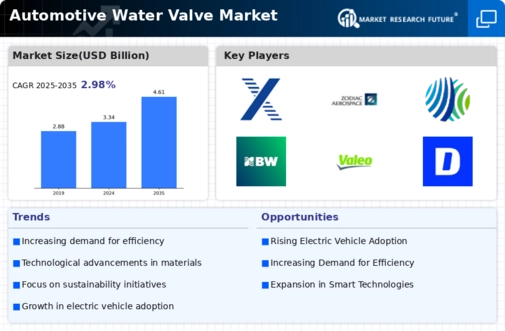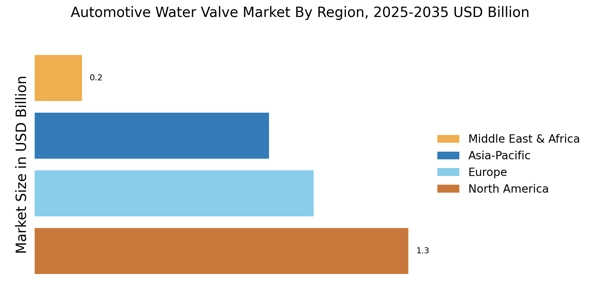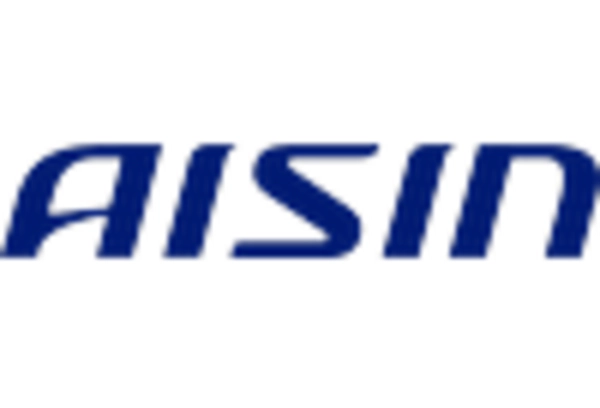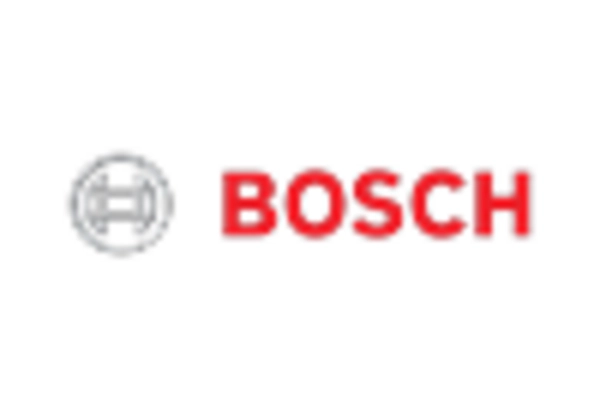Rising Demand for Fuel Efficiency
The Automotive Water Valve Market is experiencing a notable increase in demand for fuel-efficient vehicles. As consumers become more environmentally conscious, manufacturers are compelled to innovate and enhance vehicle performance. Water valves play a crucial role in regulating engine temperature, thereby optimizing fuel consumption. According to recent data, vehicles equipped with advanced water valve systems can achieve up to 15% better fuel efficiency compared to traditional systems. This trend is likely to drive the Automotive Water Valve Market as automakers seek to meet stringent emissions regulations and consumer expectations for lower operating costs.
Growth of the Electric Vehicle Segment
The growth of the electric vehicle segment is reshaping the Automotive Water Valve Market. As electric vehicles (EVs) become more prevalent, the need for efficient thermal management systems is paramount. Water valves are essential in regulating the temperature of battery systems and electric motors, ensuring optimal performance and longevity. The EV market is anticipated to expand rapidly, with projections indicating that electric vehicles could account for over 30% of total vehicle sales by 2030. This transition is likely to create new opportunities within the Automotive Water Valve Market, as manufacturers adapt their products to meet the unique requirements of electric drivetrains.
Technological Advancements in Engine Design
Technological advancements in engine design are significantly influencing the Automotive Water Valve Market. Modern engines are increasingly complex, requiring sophisticated cooling systems to maintain optimal performance. The integration of variable valve timing and turbocharging necessitates precise control of coolant flow, which is where advanced water valves come into play. The market for these components is projected to grow as manufacturers adopt innovative designs that enhance engine efficiency and reliability. This shift towards high-performance engines is expected to propel the Automotive Water Valve Market forward, as the demand for precision-engineered components rises.
Increasing Focus on Vehicle Safety Standards
The increasing focus on vehicle safety standards is a significant driver for the Automotive Water Valve Market. Regulatory bodies are implementing stricter safety regulations, necessitating the incorporation of advanced safety features in vehicles. Water valves contribute to engine safety by preventing overheating, which can lead to catastrophic failures. As safety standards evolve, manufacturers are compelled to invest in high-quality water valve systems that meet these requirements. This trend is expected to bolster the Automotive Water Valve Market, as companies prioritize safety alongside performance and efficiency in their product offerings.
Expansion of Automotive Manufacturing in Emerging Markets
The expansion of automotive manufacturing in emerging markets is poised to impact the Automotive Water Valve Market positively. Countries with growing automotive sectors are increasingly investing in local production capabilities, leading to a surge in vehicle production. This growth is accompanied by a rising demand for components, including water valves, as manufacturers seek to enhance vehicle performance and reliability. Emerging markets are projected to witness a compound annual growth rate (CAGR) of over 5% in automotive production by 2030. Consequently, this trend is likely to drive the Automotive Water Valve Market, as suppliers aim to meet the needs of these burgeoning markets.


















Leave a Comment